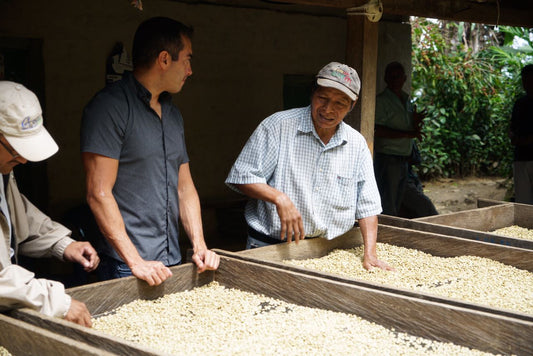
Si la Vida Te Da Limones: Why Latinos Use Fresh Limón in Everything
This ubiquitous little fruit is used prolifically throughout Latin America. But why? And how are they different to the limes and lemons more typically found north of the border?
Jump to:
As a child, limónes were a constant presence in our kitchen.
They were everywhere: from the fresh agua de limón my mom would make for me and my sister after a long day of playing in the park to the jímaca she would pack for our lunches.
And, of course, a bowl of freshly cut limones was always sitting on the table.
But the use of fresh limónes extends far beyond my own home.
Today, they are widely used in cooking across pretty much the whole of Latin America, whether in a zingy bowl of ceviche in Peru or a range of street foods, like esquites or elote preparado.
It would also seem that most Latin American drinks are incomplete without the addition of limón. For instance, while people might debate whether or not you include a raw egg in pisco sour, one thing for certain is that must contain freshly squeezed límon.

Recipes with Limón
Limónes have numerous uses in Latino dishes.
You can use a squeeze of limón juice to elevate snacks, such as cucumber slices along with a dash of Tajín; drinks, from lemonade to micheladas; main dishes, like a plate of tacos de pastor or a bowl of sopa de lima; and desserts like a simple but delicious Carlota de limón (a dish that's reminiscent of key lime pie).
Why is Limón So Popular in Latin America?
The main reason could be its accessibility throughout the region.
When I was younger, our neighbors had a big tree with long, thin branches that would hang over into our yard. All we needed to do was run over with a long stick, shake the branches, and a pile of fresh limones would fall at our feet.
Another reason may be the flavor it adds to a dish. Many Latinos use citrus in the same way that vinegar is used in many Asian cuisines. Acidic ingredients add bright, fresh notes to our food while also enhancing the other components of the dish.
After all, making any great dish is all about finding the perfect balance between the sweet, salty, sour, bitter, and umami notes.
Acid can also be used in many dishes to tenderize protein. Take ceviche for example – this traditional dish consists of raw fish marinated only with límon juice and served with onions, tomato, and fresh cilantro.
No one can deny that lime juice marries perfectly with two other key components of our cuisine: chile and coriander. A little spice, a little fragance, a little acid – is there anything better?
So, if you ever find yourself with a home-cooked meal that is lacking, just add a dash of fresh limón juice. This simple trick works wonders, you'll see.

Limes, lemons, limas, and limónes: what’s the difference?
In most Spanish-speaking countries, lemons are "limónes" and limes are "limas". Pretty straightforward, right? Well, think again.
In Mexico, the word limón (whose direct translation is 'lemon') refers to the small, green fruits that the English-speaking world calls limes. And lima refers to the big, yellow fruits known in the US as lemons.
Remezcla recounts a funny story about how members of their team – which consists of Mexican, Salvadorans, and Nicaraguans, among others – each have different ideas about what constitutes a lima or limón.
They found that the confusion stems from the fact that neither limes nor lemons are native to Latin America (despite the fact that countries in Latin America are now some of the world's biggest lime producers).
It's believed that, because the different varieties weren't simultaneously available in the same countries, it wasn't necessary to develop different names to distinguish among them.
As for why we use fresh fruit instead of store-bought juice, there are two main reasons.
The first reason is simple: store-bought juice doesn't taste as good as the real thing. It lacks the fresh punch of a fruit that has just been lovingly sliced, often contains less vitamin C, and, in a plastic bottle, means unnecessary waste. Many manufacturers also add sulfur dioxide to prolong shelf life.
Second, you can find fresh limones everywhere in Latin America, from big-chain grocery stores to family-run tiendas. So why would you settle for something in a bottle?
My advice to you, reader, is to try it for yourself. Grab yourself a bag of fresh limones and go wild. Because, as they say, If life gives you limones… make limonada!


